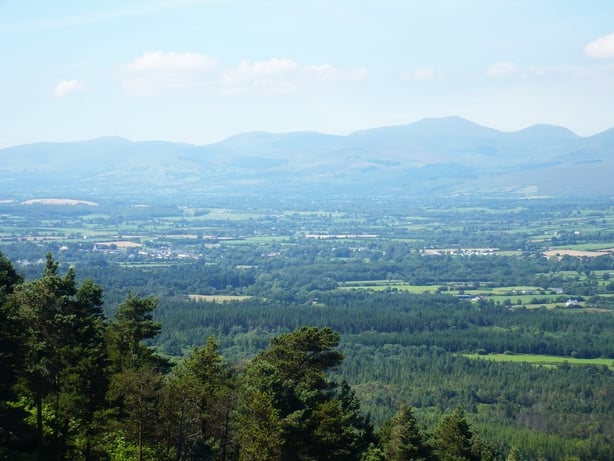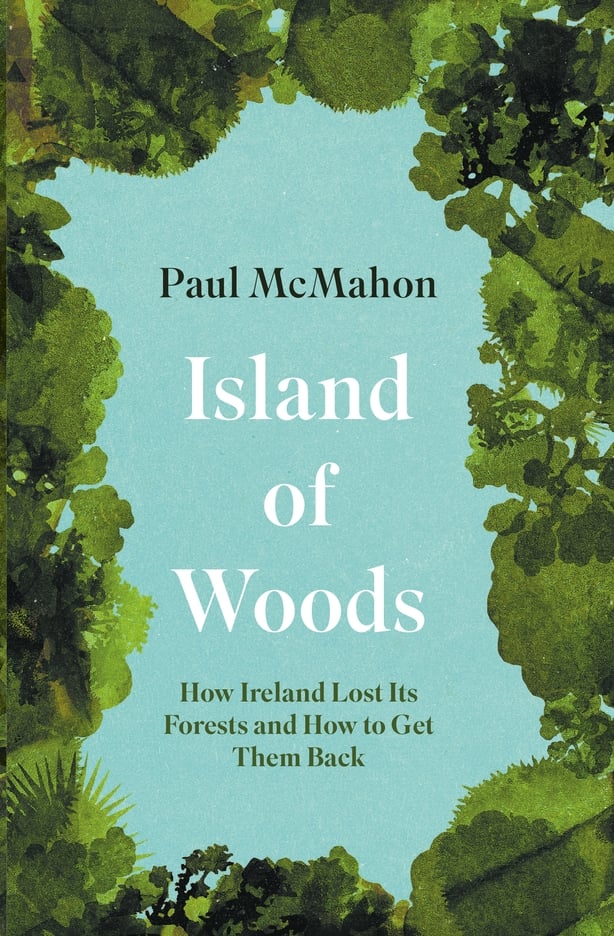Author Paul McMahon introduces an extract from his new book Island Of Woods, a comprehensive and engaging overview of the history of Irish forestry that relates historical events to present-day concerns and controversies, drawing out themes that echo throughout the centuries.
My book journeys back through more than ten thousand years of history to explain why the Irish landscape looks the way it does today. But it also explores how the Irish landscape should look in the future. How we plant and manage woodlands is at the heart of this. We need more forests to stabilize our climate, enhance biodiversity and provide materials for house-building and everyday life. But forestry in Ireland today is logjammed, beset by conflict between foresters, farmers and environmentalists. The expansion of woodland is grinding to a halt.
My book points to a more sustainable form of woodland management – known as continuous cover forestry – that can reconcile these competing interests and help Ireland become an island of woods again.
Continuous cover forestry, or 'close to nature' forestry, seeks to maintain permanent forest cover and eschews clear-felling. Instead, trees are felled individually or in small groups throughout the entire woodland area. Poor-quality trees (with crooked stems or excessive branching) are removed and high-quality trees are allowed to grow to maturity. The canopy is opened up to let in light and to encourage natural regeneration of new seedlings, which eventually fill the gaps left by felled trees. Over time, a range of tree species naturally emerges across the full breadth of the forest. Although it may start as a monoculture plantation, the end result, after decades or centuries of transformation, is a more natural forest with a diversity of species and age. The overall objective, aptly summarised by one practitioner, is ‘to maximise the commercial benefits from an area of woodland while letting natural processes do most of the work’.
Continuous cover forestry may offer a way out of the war that has paralysed the Irish forest sector in recent years. Its philosophical underpinning is something called multi-functional forestry. This is an ugly term for a beautiful concept. The essence is that a forest should deliver multiple economic, social and environmental functions at the same time. Another way to describe it could be ‘cake-ism’, a phrase popularised by British prime minister Boris Johnson during the Brexit negotiations in 2019 when trying to extract concessions from the EU without giving up anything in return. But, unlike Brexit, continuous cover forestry may be one of those rare examples when we can have our cake and eat it.

Continuous cover forestry can deliver consistent volumes of timber and is entirely compatible with a commercial focus. Research from the UK and Europe shows that this approach can deliver equally good financial returns, if not slightly better, compared to clear-fell rotations. It is true that a forest owner does not benefit from the low harvesting costs and the lumpsum revenues that come with a big clear-fell event. But this is more than offset by other gains. Under continuous cover forestry, the trees are thinned more heavily in the early years, producing earlier cash flow. Trees are allowed to grow to a larger size, which produces a higher proportion of high-value sawlog. Regular harvesting smooths out the impact of fluctuating timber prices and provides steady income. Crucially, successful natural regeneration avoids the costs of replanting, an operation that can swallow up more than one-fifth of the revenue from clear-felling and is a legal obligation in Ireland. Under continuous cover, the ‘capital’ of the standing forest is retained, while the ‘interest’ in the form of timber growth is removed every few years. Who needs an investment bond when a forest behaves like this!
Continuous cover forestry has a number of environmental benefits. Forests with a mixture of conifers and broadleaves have healthier soils and do not acidify waterways to the extent of pure spruce stands. Forests managed in this way avoid the release of nutrients and silt into streams that often accompanies clear-felling, with damaging impacts on water quality and sensitive species such as the freshwater pearl mussel. Diverse, mixed-age stands also harbour much more biodiversity than a typical conifer plantation. There are more open spaces, more light reaches the forest floor, there are more species of trees, and there are more ‘veteran’ trees packed with life at every level, like a New York skyscraper. There is more deadwood lying on the ground, which is an important home for a range of creatures. And there is more time for nature to do its thing. Forest conditions are preserved in perpetuity, which allows species to gradually colonise and compete and adapt, whereas clear-felling wipes out most forest species, setting the ecological clock back to the start each time.
Ireland needs more trees, so long as they are the right trees managed in the right way to deliver social, environmental and economic benefits. The world is shifting to a low-carbon bioeconomy that is powered by the energy from today’s sun rather than the fossilised solar energy contained in coal, oil and gas. This is the only way we will stave off a climate calamity and bequeath future generations a functioning environment. Forestry will play a crucial role in this new bioeconomy as a source of materials, a store of carbon, a refuge for biodiversity and an arena for human well-being. Ireland must play its part, growing its own timber for building, manufacturing and energy, rather than living off resources from elsewhere. And it needs to find a way to balance its greenhouse gas emissions from agriculture and other polluting sectors. Afforestation has to become popular again. Embracing continuous cover forestry may be one solution.

Island of Woods: How Ireland Lost its Forests and How to Get them Back is published by New Island

